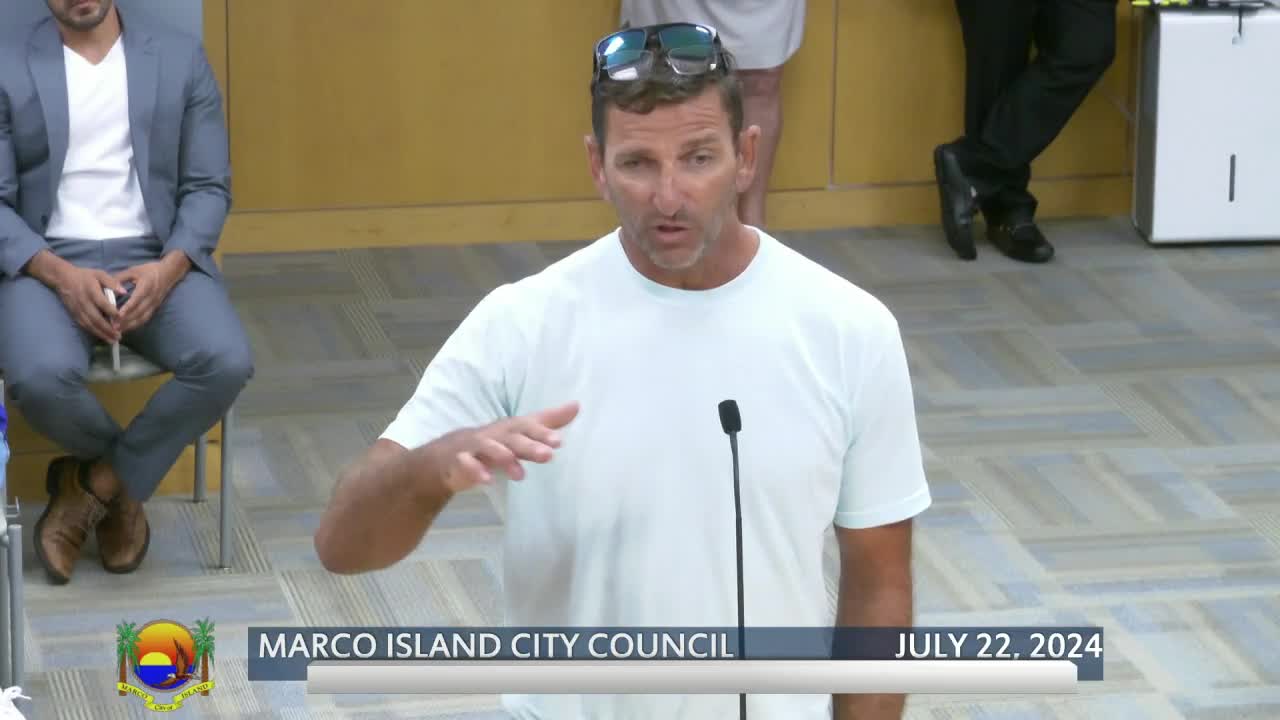Council debates emotional cemetery buffer amid commercial development plans
July 22, 2024 | Marco Island, Collier County, Florida

This article was created by AI summarizing key points discussed. AI makes mistakes, so for full details and context, please refer to the video of the full meeting. Please report any errors so we can fix them. Report an error »

In a recent council meeting, community members expressed strong opposition to a proposed commercial development adjacent to a cemetery, citing concerns over noise and the impact on the serene environment of the burial grounds. A resident, whose daughter is buried nearby, passionately argued against the project, emphasizing the need for a peaceful atmosphere during visits to the cemetery. The resident urged the council to deny the request, suggesting that the developers could adjust their plans to minimize disruption.
Council members engaged in a heated discussion about the implications of the proposed development, weighing the rights of the property owner against the emotional and aesthetic concerns of the community. Some councilors expressed that while they understood the residents' sentiments, they feared that denying the current proposal could lead to a more intrusive development in the future. They highlighted that the current plan, although not ideal, might be the least disruptive option available.
The planning manager clarified that the council's decision revolved around a variance request for a reduced landscape buffer, which would affect the visual separation between the commercial property and the cemetery. The debate centered on whether a 3-foot buffer would suffice compared to the standard 15-foot requirement, with some councilors arguing that a smaller buffer could lead to a more significant structure being built in the future.
Ultimately, the council faced a challenging decision: to prioritize the emotional needs of the community or to uphold property rights and the potential for development. The discussion underscored the complexities of urban planning, where community sentiment and legal frameworks often collide, leaving council members grappling with the long-term implications of their choices.
Council members engaged in a heated discussion about the implications of the proposed development, weighing the rights of the property owner against the emotional and aesthetic concerns of the community. Some councilors expressed that while they understood the residents' sentiments, they feared that denying the current proposal could lead to a more intrusive development in the future. They highlighted that the current plan, although not ideal, might be the least disruptive option available.
The planning manager clarified that the council's decision revolved around a variance request for a reduced landscape buffer, which would affect the visual separation between the commercial property and the cemetery. The debate centered on whether a 3-foot buffer would suffice compared to the standard 15-foot requirement, with some councilors arguing that a smaller buffer could lead to a more significant structure being built in the future.
Ultimately, the council faced a challenging decision: to prioritize the emotional needs of the community or to uphold property rights and the potential for development. The discussion underscored the complexities of urban planning, where community sentiment and legal frameworks often collide, leaving council members grappling with the long-term implications of their choices.
View full meeting
This article is based on a recent meeting—watch the full video and explore the complete transcript for deeper insights into the discussion.
View full meeting